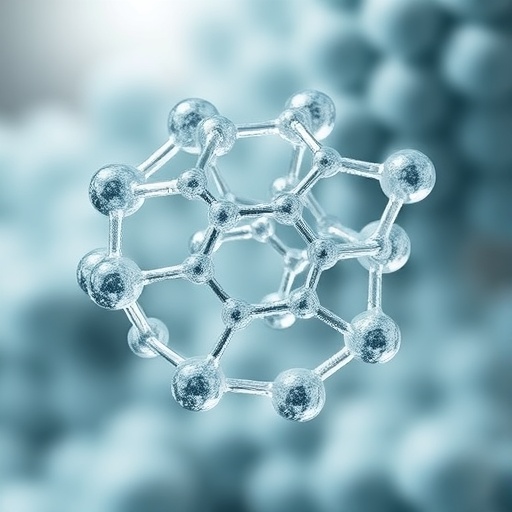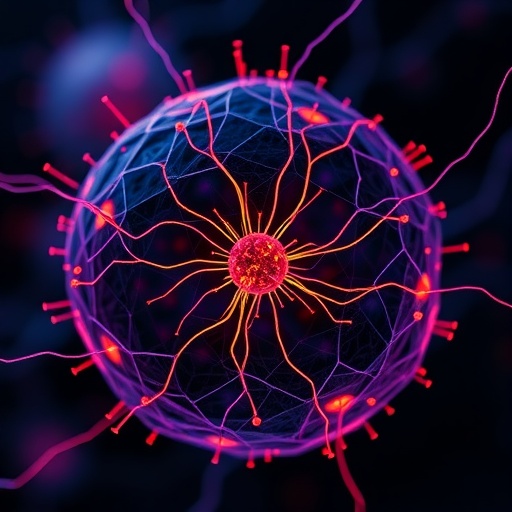
In the relentless quest to combat microbial infections, researchers have turned their attention to the potent capabilities of phospholipid amides. The recent findings by Bai and colleagues present a pioneering exploration into the design and synthesis of anti-biofilm derivatives that could change the landscape of infection treatment. This groundbreaking study, published in Molecular Diversity, highlights the pressing need for innovative solutions in the fight against biofilm-associated infections.
Biofilms, considered the root of many chronic infections, are complex communities of microorganisms that adhere to surfaces, forming a protective matrix. This structure not only shields bacteria from the immune system but also significantly limits the efficacy of conventional antibiotics. The development of resistance mechanisms further complicates treatment options, necessitating novel approaches to disrupt these resilient communities. Bai and his team have made strides in this area, showcasing how phospholipid amides can target and inhibit biofilm formation.
The researchers synthesized a series of phospholipid amide derivatives with varying acyl chain lengths and head groups, a strategic move aimed at enhancing their bioactive properties. Their synthetic pathway integrated various techniques, including microwave-assisted synthesis and column chromatography, to optimize the yield and purity of the final products. This meticulous attention to detail in their methodology is paramount as even minor alterations in chemical structure can significantly influence biological activity.
Further biological assays were conducted to evaluate the anti-biofilm efficacy of the synthesized compounds against a range of clinically relevant pathogens, including Staphylococcus aureus and Pseudomonas aeruginosa. The results were promising; several derivatives demonstrated potent inhibitory effects on biofilm formation, suggesting that these newly developed phospholipid amides could serve as effective therapeutic agents. Importantly, the ability to tailor these compounds based on their structural properties introduces a flexible framework for future research.
The significance of this research extends beyond mere efficacy; it raises critical discussions around the underlying mechanisms of action. Understanding how these phospholipid amides achieve biofilm disruption is essential, especially considering the complexity of biofilm resilience. Preliminary studies suggest that these derivatives may alter bacterial signaling pathways or disrupt the structural integrity of the biofilm matrix. This detail opens an avenue for further exploration into their modes of action, which could illuminate new biological targets for therapeutic intervention.
Additionally, potential complementary strategies to enhance the anti-biofilm activity of these compounds should be considered. For example, combining phospholipid amides with existing antibiotics could synergistically augment their effectiveness. The researchers note that, while their focus was on synthesis and initial efficacy, the interplay between these new agents and traditional treatments warrants thorough investigation. This could pave the way for combination therapies that lessen dependency on high-dose antibiotics, thus potentially reducing the risk of resistance development.
Moreover, this study underscores the importance of collaborative efforts between chemists, microbiologists, and clinicians. A multidisciplinary approach is crucial in the early stages of drug development to ensure that newly synthesized compounds are not only potent but also clinically relevant. As researchers like Bai advocate for a unified strategy in addressing biofilm-related challenges, it becomes clear that a holistic perspective will help bridge gaps between laboratory findings and their application in real-world clinical settings.
As the research community continues to unveil the complexities of microbial behavior, studies like this one provide a beacon of hope. The ongoing threat of antibiotic resistance catalyzes the urgency for innovation within the pharmaceutical landscape. Phospholipid amides, as presented in this research, illustrate that nature-inspired chemistry may hold the key to unlocking novel therapeutic avenues in the fight against infectious diseases.
The implications of these findings extend beyond individual compounds; they inspire a broader dialogue about how we approach research and development in infectious disease treatment. By prioritizing the synthesis of new chemical entities that can effectively tackle biofilms, scientists are paving the way for next-generation therapeutics. The work of Bai and colleagues indeed offers a glimpse into the future of infection control, where the battle against resilient biofilms may become more manageable.
Looking ahead, the challenge will be to move from preliminary findings to in vivo studies and eventually clinical trials. This transition is fraught with its own set of challenges, including ensuring biocompatibility and assessing the pharmacokinetics of these novel compounds. However, with the foundation laid by studies like Bai’s, researchers are better equipped to navigate these hurdles and translate laboratory success into patient outcomes.
In conclusion, the work of Bai and colleagues represents an exciting advancement in the field of drug development, specifically targeting the complexities of biofilms. Their novel phospholipid amides not only exhibit promising anti-biofilm properties but also reinforce the importance of interdisciplinary collaboration in tackling some of the most pressing health challenges of our time. As we stand on the cusp of new discoveries, the potential to revolutionize treatment paradigms for biofilm-associated infections is undeniably within reach.
The continuous evolution of microbial resistance necessitates ongoing research and a commitment to innovation. The initial successes reported by Bai and his team could potentially lead to breakthrough therapies, offering hope in a clinical landscape that desperately needs new solutions. Researchers should continue to build on this work, refining and expanding upon the findings to ensure that effective treatments are developed and brought to the forefront of infection management.
As this research captures the attention of the scientific community and beyond, the focus will naturally shift towards scrutinizing and understanding the therapeutic implications of these phospholipid amides. The journey from conception to clinical application is long, yet with each study, we get one step closer to effective interventions that could save lives and change the course of how we treat biofilm-associated infections.
Emerging studies inspired by this foundational work will likely focus on optimizing the structures of phospholipid amides for even greater efficacy and specificity against target pathogens. This ongoing exploration highlights the dynamic nature of scientific research, where each discovery builds upon the last, leading to advancements that could one day revolutionize the medical field.
In summary, the study led by Bai and his team serves as a critical reminder of the importance of innovation in combating microbial infections. As we delve deeper into understanding the nuances of biofilm formation and resistance mechanisms, the insights gleaned from this research could play a vital role in shaping the future of infectious disease therapeutics.
Subject of Research: Anti-biofilm derivatives from phospholipid amides
Article Title: Design and synthesis of anti-biofilm derivatives from phospholipid amides
Article References:
Bai, S., Wan, S., Chen, Y. et al. Design and synthesis of anti-biofilm derivatives from phospholipid amides.
Mol Divers (2025). https://doi.org/10.1007/s11030-025-11270-y
Image Credits: AI Generated
DOI: 10.1007/s11030-025-11270-y
Keywords: Phospholipid amides, anti-biofilm, microbial infections, drug development, antibacterial agents, biofilm formation, antibiotic resistance, therapeutic innovations.
Tags: anti-biofilm agentsantibiotic resistance mechanismsbioactive compound synthesisbiofilm-associated infectionschronic infection solutionscolumn chromatography in researchinnovative infection therapiesmicrobial infections treatmentmicrowave-assisted synthesis techniquesmolecular diversity in pharmaceuticalsphospholipid amidessynthetic pathway optimization




